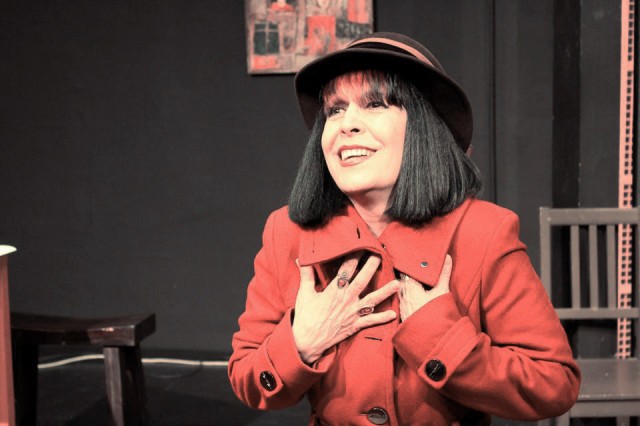The original version of this article contained information that was unclear and has been changed. See the bottom of the article for additional information.
A lonely train horn sounds. Steel wheels strain and squeal against the track as the engine roars its approach. With a suitcase in hand, Professor Anahid Keshishian appears on stage to relive her past.
The one-woman show, titled “Ka Yev Chka II,” which is Armenian for “There Is and There Isn’t II,” traces Keshishian’s journey as a young teen moving with her family from pre-revolutionary Iran to 1970s Soviet Armenia.
This production continues the story left untold by her previous one-woman show, the first “There Is and There Isn’t,” which was staged in 2007 and detailed her childhood in Tehran, Iran prior to her family’s move.
“That first part took me only a few months to do,” Keshishian said. “It was nice, it was more entertaining and loved by the audience and they were asking for the continuation. I was saying, ‘Oh my God, the continuation is tough!’ It’s not that little girl anymore who is having a good time … this one is definitely not as playful.”
The professor from the UCLA’s Near Eastern Languages and Cultures department imbues the production with music, dance and poetry in order to recapture the spirit of the time and take her audience back to that era.
Over the course of the hour-and-a-half-long show, Keshishian chronologically bounces from memory to memory as she transitions from her early adolescent years to young adulthood. Some are light-hearted anecdotes while others are painful recollections meant to illuminate the shortcomings of Soviet society in Armenia.
“The Soviet (people) are not used to bringing these issues – the immigrant issue, the problematic relationship with the minorities – as part of our dialogue,” Keshishian said. “We don’t talk about problems, we don’t write, we don’t do master theses, we don’t do dissertation on these things – we’re very, very timid. You cover them, you hide them.“
Second-year sociology student Ani Gurdogluyan said she felt an acute connection to Keshishian’s story because of her own family’s past living in Soviet Armenia, which eventually led to their own immigration story.
“That unfairness … the corruption is one of the biggest reasons that my family and I moved to America,” Gurdogluyan said. “I wasn’t going to be guaranteed an education because (the government) was so corrupt.”
Immigrating to Soviet Armenia from pre-revolutionary Iran, Keshishian said that she and her family were leaving behind a colorful past and falling into a “gray place.”
“We grew up with colors,” Keshishian said. “And there we are and everything is gray, everything is brown. Even, I remember, the Christmas ornaments were not shining. For us, as kids, we’re like, ‘We want real Christmas ornaments!’ But (the Soviets) loved their ornaments!”
Though Keshishian said she understood the history of the people of Armenia stretched back through years of famine and war, and that Soviet Armenia of the 1970s was tame in comparison to the years that came before, she said she never fully acclimated to Soviet life. Rather, it became increasingly intolerable for her.
“Those (native) people were fine. They didn’t see what was happening in the world,” Keshishian said. “Whatever they heard from the outside world was awful … That’s why (“There Is and There Isn’t II”) is interesting because here, I’m slapping right and left, I’m showing how the men had treated me, how the bureaucracy treated me … these things are forbidden to talk about.”
Despite the fact that Keshishian knew she had to leave Armenia, the conflict and turmoil of being stripped away from her homeland is vividly portrayed in her performance.
“We grew up longing and wanting and desiring and dreaming about Armenia. That’s how we grew up in Iran,” said Keshishian. “You start materializing your love. It becomes real; it becomes tangible.”
Second-year political student Mihran Yezbekyan, one of Keshishian’s students this quarter, said he is eager to see his professor’s show.
“She is so interesting. I was just curious to know what she went through,” Yezbekyan said. “Because I’m also an immigrant … I felt like I could connect to the story.”
Keshishian said she hopes the students who do see her show take away two things in particular.
“One is psychological and artistic and the other is historical,” Keshishian said. “The psychological part is … tell the stories. Tell things that happen to you. And the historical part is that I am chronicling it. This is what happened. This is a history of a girl, of a young woman. And through that you see that era through one person’s eye. But you see time and it’s important, and I want to bring that time to my audience.”
Clarification: Though Keshishian said she understood the history of the people of Armenia stretched back through years of famine and war, and that Soviet Armenia of the 1970s was tame in comparison to the years that came before, she said she never fully acclimated to Soviet life. Rather, it became increasingly intolerable for her.

